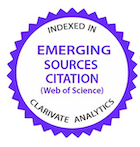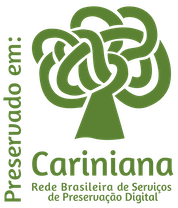Parâmetros cinéticos da degradação ruminal da casca de café (Coffea arabica, L.) tratada com hidróxido de sódio (NAOH)
Palavras-chave:
Nutrição Animal, Resíduos industriaisResumo
O objetivo deste trabalho foi o de determinar a cinética de degradação ruminal da matéria seca da casca de café, tratada com diferentes quantidades de hidróxido de sódio. Utilizaram-se duas vacas fistuladas no rúmen, incubando-se as amostras em sacolas de náilon por 12, 24, 36, 48 e 72 horas, por quatro rodadas seqüenciais, sendo que cada uma destas representou um bloco, dentro de um delineamento de blocos inteiramente casualizados. Tratou-se a casca de café com 0%, 3%, 6% e 9 % de hidróxido de sódio (base seca) constituindo assim os tratamentos t1 a t4. os resultados médios encontrados foram comparados pelo teste de Tukey, ao nível de 5% de probabilidade, como se segue para os tratamentos de 1 a 4, respectivamente: fração solúvel (9,35d; 17,65c; 31,93b; 32,28a), de (34,40d; 40,50c; 43,28b; 50,35a), degradabilidade potencial (44,33d; 50,33c; 52,35b; 57,70a) e tempo de colonização em horas (4,03a; 3,93a; 4,33a; 2,55a). Os resultados indicam que o aumento dos níveis percentuais de NaOH utilizados nos tratamentos eleva a solubilidade ruminal, a degradabilidade potencial e efetiva da casca de café, não influenciando significativamente o tempo de colonização
PALAVRAS-CHAVES: degradabilidade ruminal, resíduos agrícolas, ruminante
Downloads
Downloads
Publicado
Como Citar
Edição
Seção
Licença
Copyright (c) 2008 Ciência Animal Brasileira / Brazilian Animal Science

Este trabalho está licenciado sob uma licença Creative Commons Attribution 4.0 International License.
Autores que publicam nesta revista concordam com os seguintes termos:
- Autores mantém os direitos autorais e concedem à revista o direito de primeira publicação, com o trabalho simultaneamente licenciado sob a Licença Creative Commons Attribution que permite o compartilhamento do trabalho com reconhecimento da autoria e publicação inicial nesta revista.
- Autores têm autorização para assumir contratos adicionais separadamente, para distribuição não-exclusiva da versão do trabalho publicada nesta revista (ex.: publicar em repositório institucional ou como capítulo de livro), com reconhecimento de autoria e publicação inicial nesta revista.
- Autores têm permissão e são estimulados a publicar e distribuir seu trabalho online (ex.: em repositórios institucionais ou na sua página pessoal) a qualquer ponto antes ou durante o processo editorial, já que isso pode gerar alterações produtivas, bem como aumentar o impacto e a citação do trabalho publicado (Veja O Efeito do Acesso Livre).


























